Introduction: What is a Charcuterie Board?
A charcuterie board is a platter of meats, cheeses, fruits, vegetables, crackers, and dips that is served as an appetizer or a snack. It originated in France, where charcuterie refers to the art of curing and preserving meats. A charcuterie board is a perfect way to showcase your culinary skills, impress your guests, and create a visual feast that is as delicious as it is beautiful.
Why Charcuterie Boards are Popular
Charcuterie boards have become increasingly popular in recent years, and for good reason. They are versatile, customizable, and easy to prepare. Charcuterie boards are perfect for any occasion, from casual get-togethers to formal parties. They are also a great way to cater to different dietary needs, as they can be made vegetarian, gluten-free, or keto-friendly.
How to Create a Charcuterie Board
Creating a charcuterie board may seem daunting at first, but it’s actually quite simple. The key is to choose a variety of high-quality ingredients that complement each other in terms of flavor, texture, and color. You can also add your own personal touch by incorporating unique ingredients or arranging the items in an aesthetically pleasing way.
- Choose a board or platter that is large enough to hold all of your ingredients.
- Select a variety of meats, such as salami, prosciutto, and ham.
- Add a selection of cheeses, such as brie, cheddar, and gouda.
- Incorporate fruits and vegetables, such as grapes, strawberries, and carrots.
- Include crackers, bread, or other carb options.
- Finish with dips, spreads, or jams to add depth of flavor.
By following these simple steps, you can create a charcuterie board that is sure to impress your guests and make your next event a memorable one.
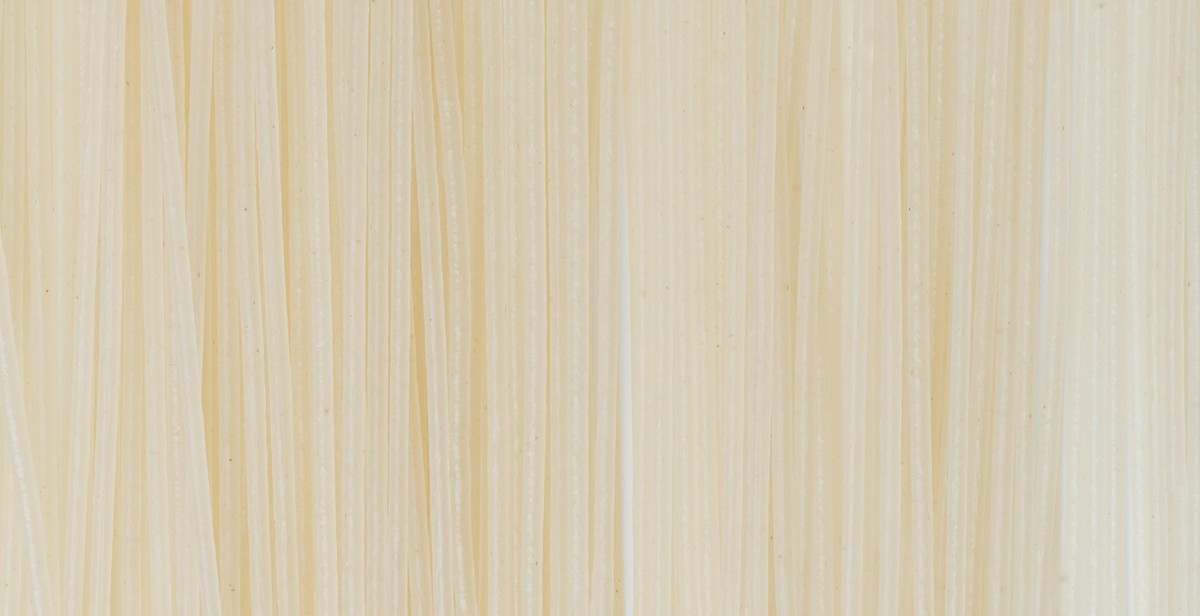
Choosing the Right Board
When it comes to creating a charcuterie board, choosing the right board is crucial. The board not only serves as a foundation for your ingredients, but it also plays a significant role in the presentation of your platter. There are several factors to consider when selecting a charcuterie board, including size and shape, material, and design.
Size and Shape
The size and shape of your charcuterie board will largely depend on the number of guests you are serving and the amount of ingredients you plan to include. If you are serving a large group, a larger board may be necessary to accommodate all of your ingredients. On the other hand, if you are serving a smaller group, a smaller board may be more appropriate.
The shape of your board is also important. A rectangular board is ideal for arranging ingredients in a linear fashion, while a circular board is perfect for creating a visually appealing, symmetrical display.
Material
Charcuterie boards come in a variety of materials, each with its own unique characteristics. Wooden boards are a popular choice due to their durability and rustic appeal. However, they can be porous and may absorb odors and stains over time.
Marble and slate boards are non-porous and easy to clean, making them a great option for those who prioritize cleanliness. However, they can be heavy and may not be as visually appealing as wooden boards.
Design
The design of your charcuterie board can add an extra element of style to your presentation. Some boards feature intricate designs and patterns, while others have a simple, minimalist look. Consider the overall aesthetic you are going for and choose a board that complements it.
In addition to the design of the board itself, you may also want to consider adding additional elements such as cheese knives or small bowls for dips and sauces. These can not only enhance the presentation of your board but also make it more functional for your guests.
| Size and Shape | Material | Design |
|---|---|---|
| Consider the number of guests and amount of ingredients when choosing the size and shape of your board. Rectangular boards are ideal for arranging ingredients linearly, while circular boards create a visually appealing, symmetrical display. | Wooden boards are durable and rustic, while marble and slate boards are non-porous and easy to clean. Choose a material that suits your needs and preferences. | The design of your board can add an extra element of style to your presentation. Consider the overall aesthetic you are going for and choose a board that complements it. |
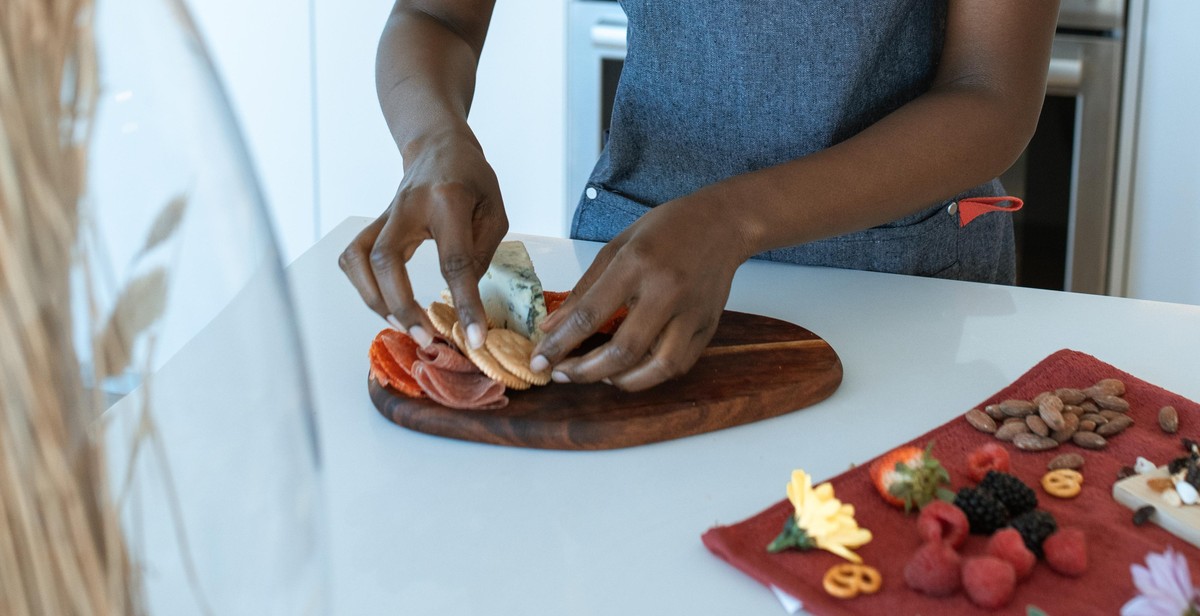
Selecting Meats
One of the most important aspects of creating a charcuterie board is selecting the right meats to include. A well-rounded selection of meats will offer a variety of flavors and textures that will appeal to all guests. Here are some tips for selecting meats for your charcuterie board:
Variety of Meats
When selecting meats for your charcuterie board, it’s important to offer a variety of options. This can include:
- Hard salami
- Prosciutto
- Chorizo
- Coppa
- Pepperoni
- Bresaola
- Pate
Offering a variety of meats will ensure that there is something for everyone to enjoy. It’s also a good idea to include both cured and cooked meats to offer different textures and flavors.
Amount of Meat to Serve per Person
When planning your charcuterie board, it’s important to consider how much meat to serve per person. A good rule of thumb is to plan for 2-3 ounces of meat per person. This will ensure that everyone has enough to enjoy without being overwhelmed.
Preparing the Meat
Before adding the meat to your charcuterie board, it’s important to prepare it properly. This can include:
- Slicing the meat thinly
- Removing any rind or casing
- Allowing the meat to come to room temperature before serving
Slicing the meat thinly will make it easier to eat and will also help to distribute the flavors more evenly throughout the board. Removing any rind or casing will make the meat easier to eat and will also improve the overall presentation of the board. Allowing the meat to come to room temperature before serving will enhance the flavors and make the meat more tender.
| Meat | Flavor Profile | Texture |
|---|---|---|
| Hard Salami | Savory, salty, slightly spicy | Firm, chewy |
| Prosciutto | Salty, nutty, sweet | Tender, melt-in-your-mouth |
| Chorizo | Spicy, tangy, smoky | Firm, chewy |
| Coppa | Sweet, nutty, slightly spicy | Tender, melt-in-your-mouth |
| Pepperoni | Savory, spicy, slightly smoky | Firm, chewy |
| Bresaola | Salty, nutty, slightly sweet | Tender, melt-in-your-mouth |
| Pate | Rich, savory, earthy | Smooth, creamy |
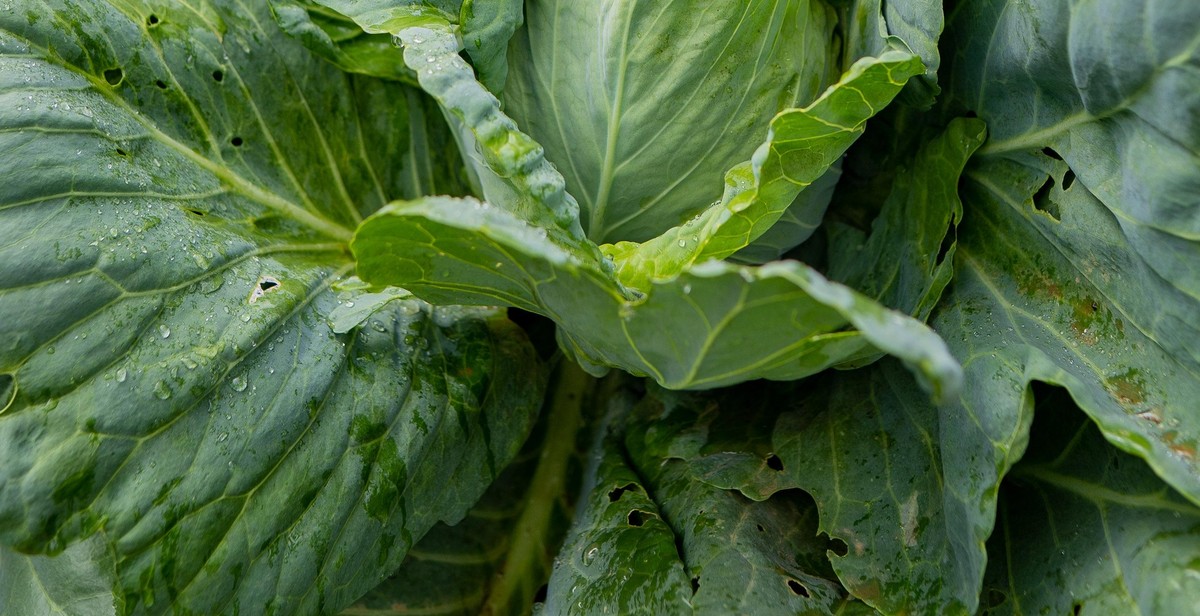
Picking Vegetables and Fruit
When it comes to creating a charcuterie board, choosing the right vegetables and fruit is just as important as selecting the perfect meats and cheeses. Here are some tips on how to pick the best produce for your platter:
Choosing the Right Vegetables
When selecting vegetables for your charcuterie board, it’s important to choose a variety of colors, textures, and flavors. Here are some vegetables that are perfect for your platter:
- Carrots: These sweet and crunchy vegetables are perfect for dipping in hummus or other dips.
- Celery: Celery has a refreshing and crisp flavor that pairs well with creamy cheeses.
- Radishes: These spicy and crunchy vegetables add a pop of color and flavor to your platter.
- Cucumbers: Cucumbers have a mild, refreshing flavor that pairs well with salty meats and cheeses.
- Cherry Tomatoes: These sweet and juicy tomatoes are perfect for snacking on their own or pairing with meats and cheeses.
Choosing the Right Fruit
Just like vegetables, it’s important to choose a variety of colors, textures, and flavors when selecting fruit for your charcuterie board. Here are some fruits that are perfect for your platter:
- Grapes: Grapes are a classic fruit for charcuterie boards because they pair well with a variety of meats and cheeses.
- Strawberries: These sweet and juicy berries are perfect for pairing with creamy cheeses.
- Blueberries: Blueberries have a tart and sweet flavor that pairs well with salty meats and cheeses.
- Figs: Figs have a sweet and earthy flavor that pairs well with salty meats and tangy cheeses.
- Pears: Pears have a sweet and juicy flavor that pairs well with creamy and salty cheeses.
Preparing the Vegetables and Fruit
Once you’ve selected your vegetables and fruit, it’s important to prepare them properly for your charcuterie board. Here are some tips on how to prepare your produce:
- Wash all produce thoroughly before cutting and arranging on the platter.
- Cut vegetables into bite-sized pieces or sticks for easy snacking.
- Leave smaller fruits like grapes and berries whole, and cut larger fruits like pears and figs into slices or wedges.
- Arrange the vegetables and fruit on the platter in a visually appealing way, alternating colors and textures.
By following these tips, you’ll be able to pick the perfect vegetables and fruit for your charcuterie board and prepare them in a way that will impress your guests.
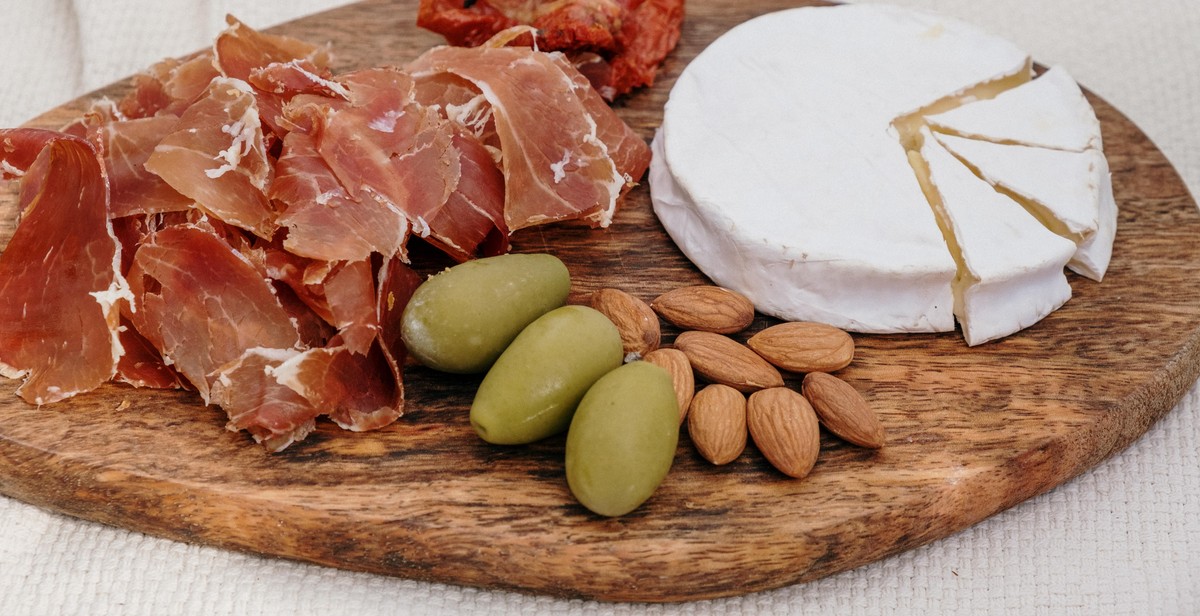
Selecting Cheese
Cheese is an essential component of any charcuterie board. It adds flavor, texture, and color to the platter. When selecting cheese, consider the following:
Types of Cheese to Include
It’s best to include a variety of cheeses on your charcuterie board to cater to different tastes. Here are some popular types of cheese to consider:
- Soft Cheese: Brie, Camembert, and goat cheese are great options for those who prefer milder flavors.
- Hard Cheese: Cheddar, Gouda, and Parmesan are perfect for those who enjoy stronger flavors.
- Blue Cheese: Roquefort, Gorgonzola, and Stilton are ideal for those who like bold and tangy flavors.
Amount of Cheese to Serve per Person
The amount of cheese to serve per person depends on how many other items you have on your charcuterie board. A good rule of thumb is to serve about 1-2 ounces of cheese per person if you have a lot of other items on the platter. If cheese is the main focus of the board, then you can serve up to 4-6 ounces per person.
Preparing the Cheese
Before serving the cheese, it’s important to prepare it properly. Here are some tips:
- Take the cheese out of the refrigerator at least 30 minutes before serving to allow it to come to room temperature.
- Cut the cheese into bite-sized pieces or slices for easy serving.
- Label the cheese so that your guests know what they are eating.
| Type of Cheese | Flavor | Texture |
|---|---|---|
| Brie | Mild | Soft and creamy |
| Cheddar | Sharp | Firm and crumbly |
| Gorgonzola | Tangy and bold | Creamy and crumbly |
By selecting the right types of cheese, serving the appropriate amount, and preparing it properly, you can create a delicious and impressive charcuterie board that your guests will love.
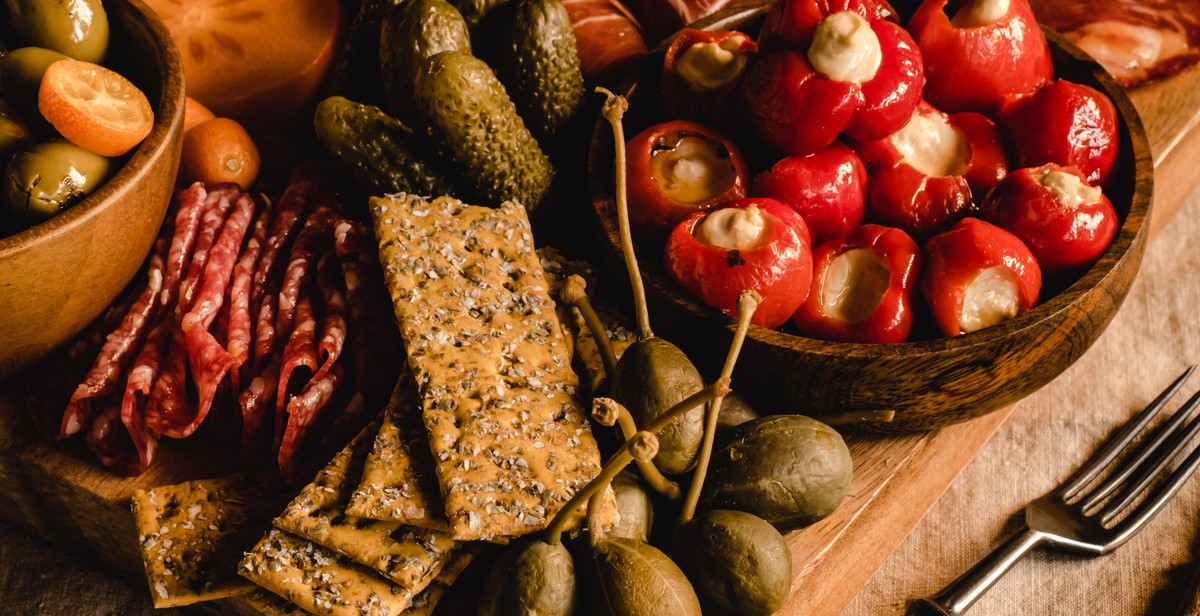
Adding Crackers and Bread
When it comes to creating a charcuterie board, the crackers and bread you choose can make all the difference. Here are some tips on selecting the right types and amounts of crackers and bread to serve:
Types of Crackers and Bread to Use
There are many different types of crackers and bread that can be used on a charcuterie board. Some popular options include:
- Crackers – Choose a variety of crackers such as water crackers, rice crackers, or whole-grain crackers. These provide a neutral base for the other items on the board.
- Bread – Sliced baguette, crostini, or pita bread are all great options. Toasting the bread beforehand can add extra flavor and texture.
- Gluten-free options – Consider adding gluten-free crackers or bread for guests with dietary restrictions.
Amount of Crackers and Bread to Serve per Person
When determining how much crackers and bread to serve per person, a good rule of thumb is to provide 3-4 crackers or 2-3 slices of bread per person. However, this can vary depending on the size of the gathering and the other items on the board. It’s always better to have extra crackers and bread on hand, just in case.
Another thing to keep in mind is the size of the crackers and bread. If you choose larger crackers, you may want to serve fewer per person. Similarly, if you choose smaller slices of bread, you may want to serve more per person.
| Number of Guests | Crackers per Person | Bread Slices per Person |
|---|---|---|
| 4-6 | 12-24 | 6-12 |
| 8-10 | 24-40 | 12-20 |
| 12-14 | 36-56 | 18-28 |
By following these tips, you can ensure that your charcuterie board has the perfect amount and variety of crackers and bread to complement the other items on the board and satisfy your guests’ appetites.
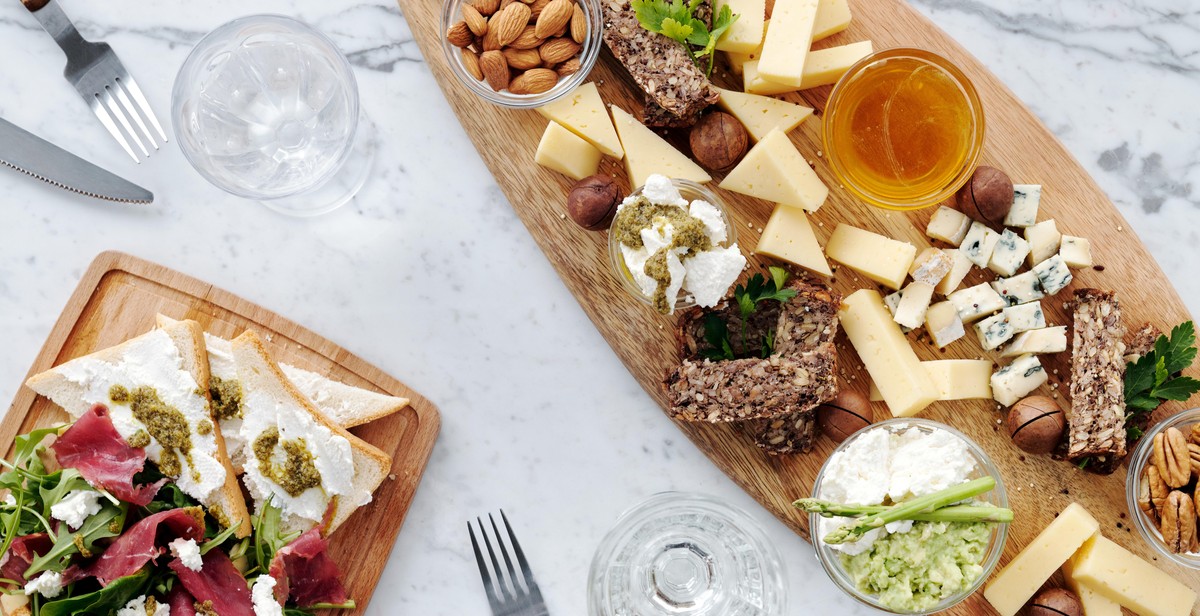
Garnishing the Board
Aside from the meats and vegetables, you can also add some extra touches to your charcuterie board to make it more visually appealing and flavorful. Here are some ideas:
Adding Nuts
Nuts are a great addition to any charcuterie board as they add texture and crunch. Some popular options include almonds, pecans, walnuts, and pistachios. You can serve them in a small bowl or scattered around the board.
Adding Olives and Pickles
Olives and pickles are a great way to add some saltiness and acidity to your charcuterie board. You can choose from a variety of options such as green olives, black olives, pickled cucumbers, pickled onions, and more. Serve them in small dishes or arrange them on the board.
Adding Jams and Honey
Adding some sweet elements to your charcuterie board can help balance out the saltiness of the meats and cheeses. Some great options include fig jam, apricot jam, honey, and fruit preserves. Serve them in small dishes or spoon them onto the board.
By adding these extra elements to your charcuterie board, you can elevate the flavors and presentation to impress your guests. Remember to have fun with it and experiment with different combinations!
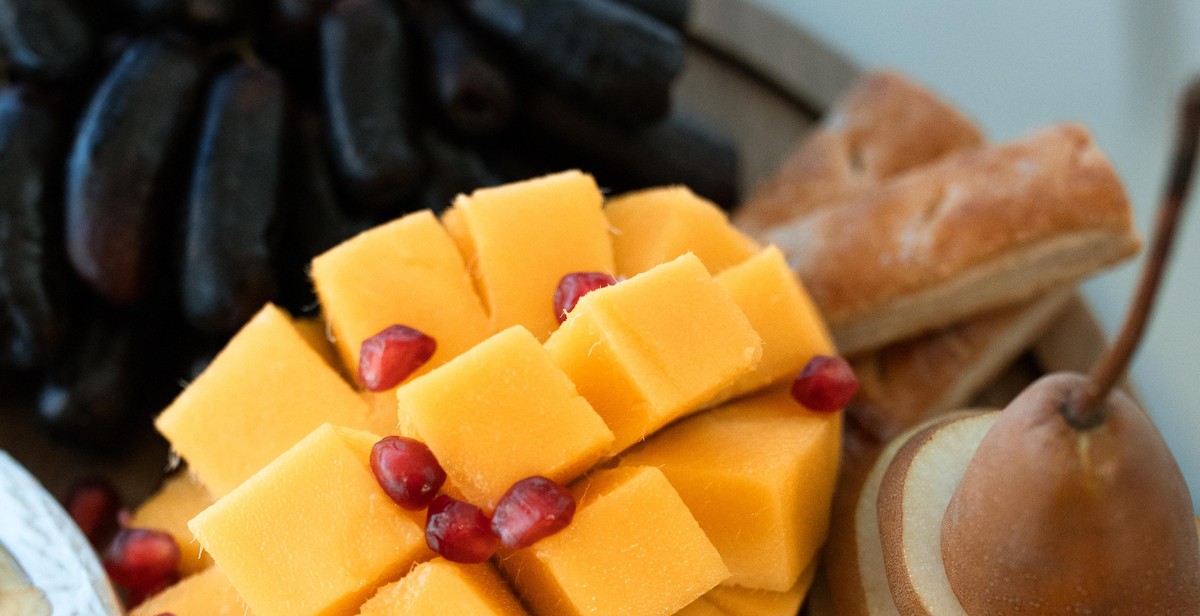
Assembling the Board
Now that you have all your ingredients ready, it’s time to assemble your charcuterie board. Here are some tips on arranging the meats and cheese, adding vegetables and fruit, and adding crackers and bread:
Arranging the Meats and Cheese
Start by placing your meats on the board. Fold or roll them into attractive shapes and arrange them in a circular or diagonal pattern. Make sure to leave some empty space between each meat so that they don’t blend together.
Next, add your cheese. Cut it into bite-sized pieces or wedges and place them in between the meats. Make sure to vary the type of cheese you use, including soft, hard, and aged cheeses. This will add texture and flavor to your board.
Adding Vegetables and Fruit
Now it’s time to add some color and crunch to your board with fresh vegetables and fruit. Cut them into bite-sized pieces or slices and arrange them in between the meats and cheese. Use a variety of colors and textures to make your board visually appealing and appetizing. Some popular options include:
- Carrots
- Cucumbers
- Cherry tomatoes
- Grapes
- Apples
- Pears
Adding Crackers and Bread
Finally, add some crackers and bread to your board to serve as a vehicle for the meats, cheese, and vegetables. Choose a variety of options, including plain and flavored crackers, sliced baguette, and breadsticks. Place them in between the other ingredients or in a separate section of the board.
Remember to keep in mind the size of your board and the number of guests you are serving when assembling your charcuterie board. You want to make sure there is enough of each ingredient for everyone to enjoy.
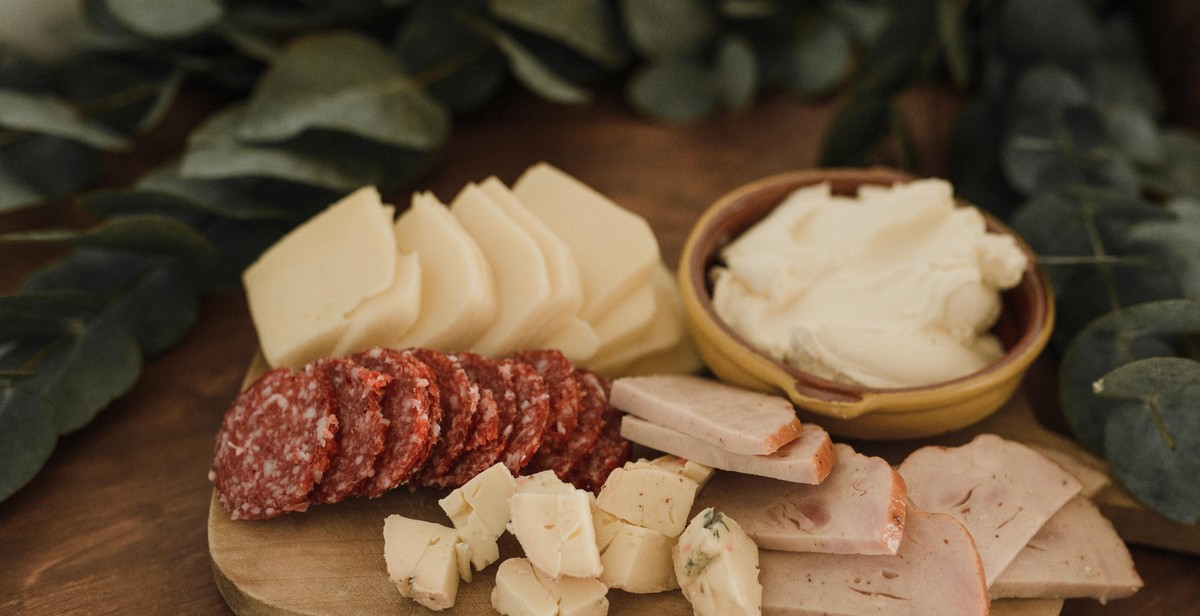
Conclusion
Creating a charcuterie board is an art form that requires a bit of creativity, patience, and knowledge of the different types of meats, cheeses, fruits, and vegetables available. With the right ingredients, tools, and techniques, you can assemble a beautiful and impressive platter that will impress your guests and satisfy their taste buds.
Tips for Assembling a Great Charcuterie Board
- Choose a variety of meats, cheeses, fruits, and vegetables
- Arrange the items in a visually appealing way
- Use contrasting colors, textures, and shapes
- Add some crackers, bread, or nuts for crunch and variety
- Consider the season and occasion when selecting ingredients
- Keep the board chilled until ready to serve
Final Thoughts
Creating a charcuterie board is a fun and rewarding experience that can be enjoyed by anyone, regardless of their culinary skills. With a little bit of practice and experimentation, you can create a unique and delicious platter that reflects your personal taste and style. So go ahead and give it a try – your taste buds (and your guests) will thank you!
